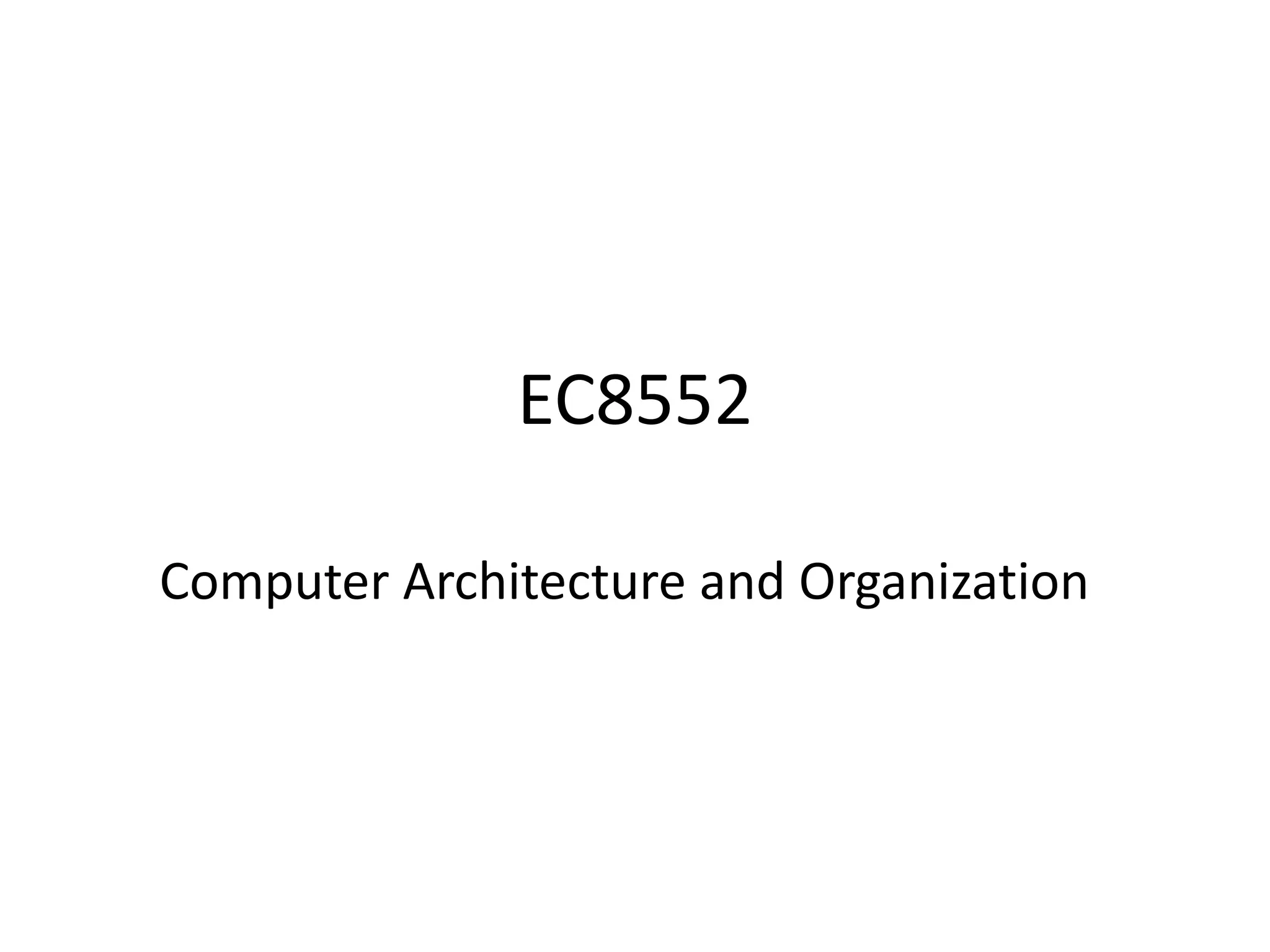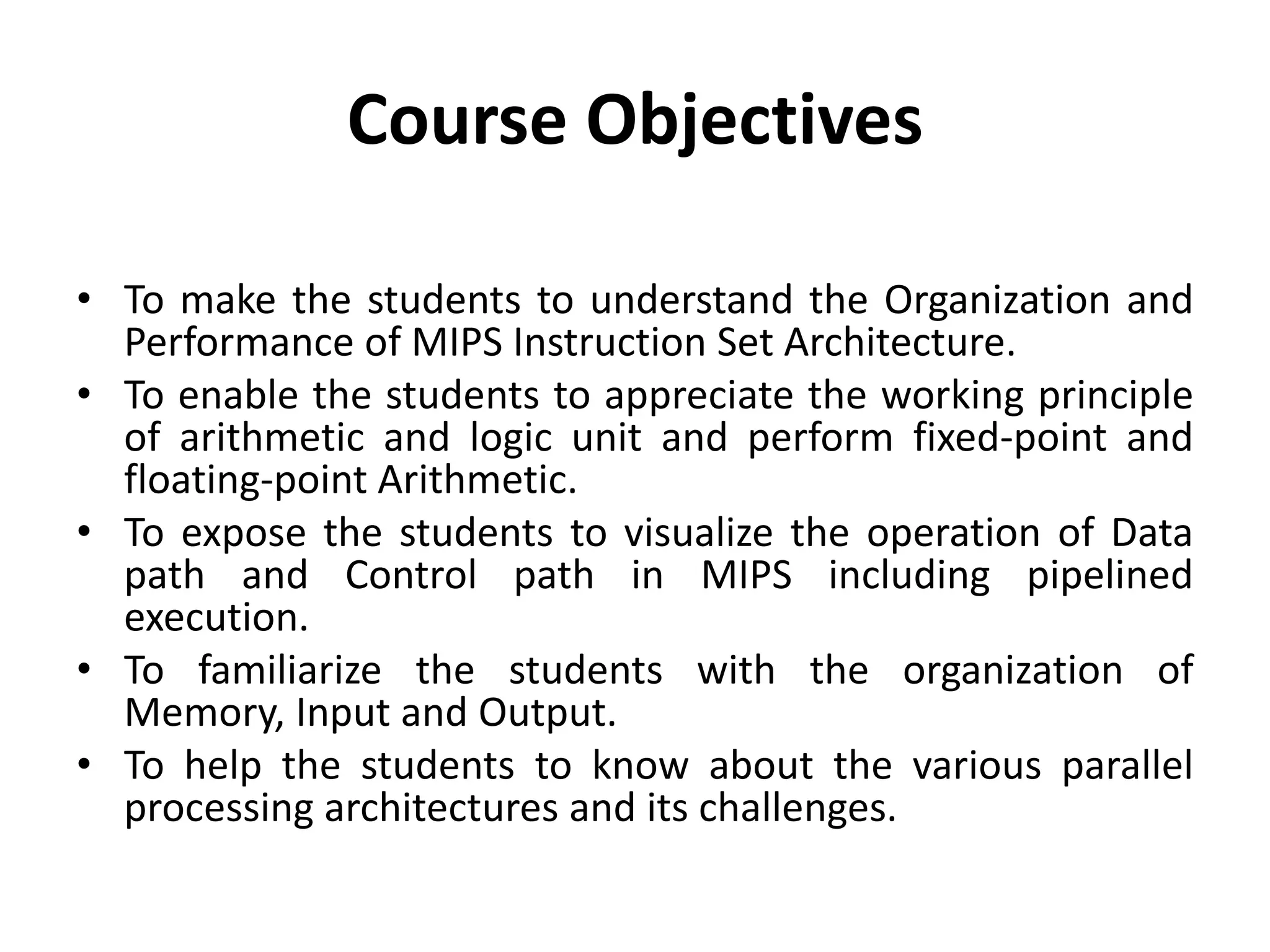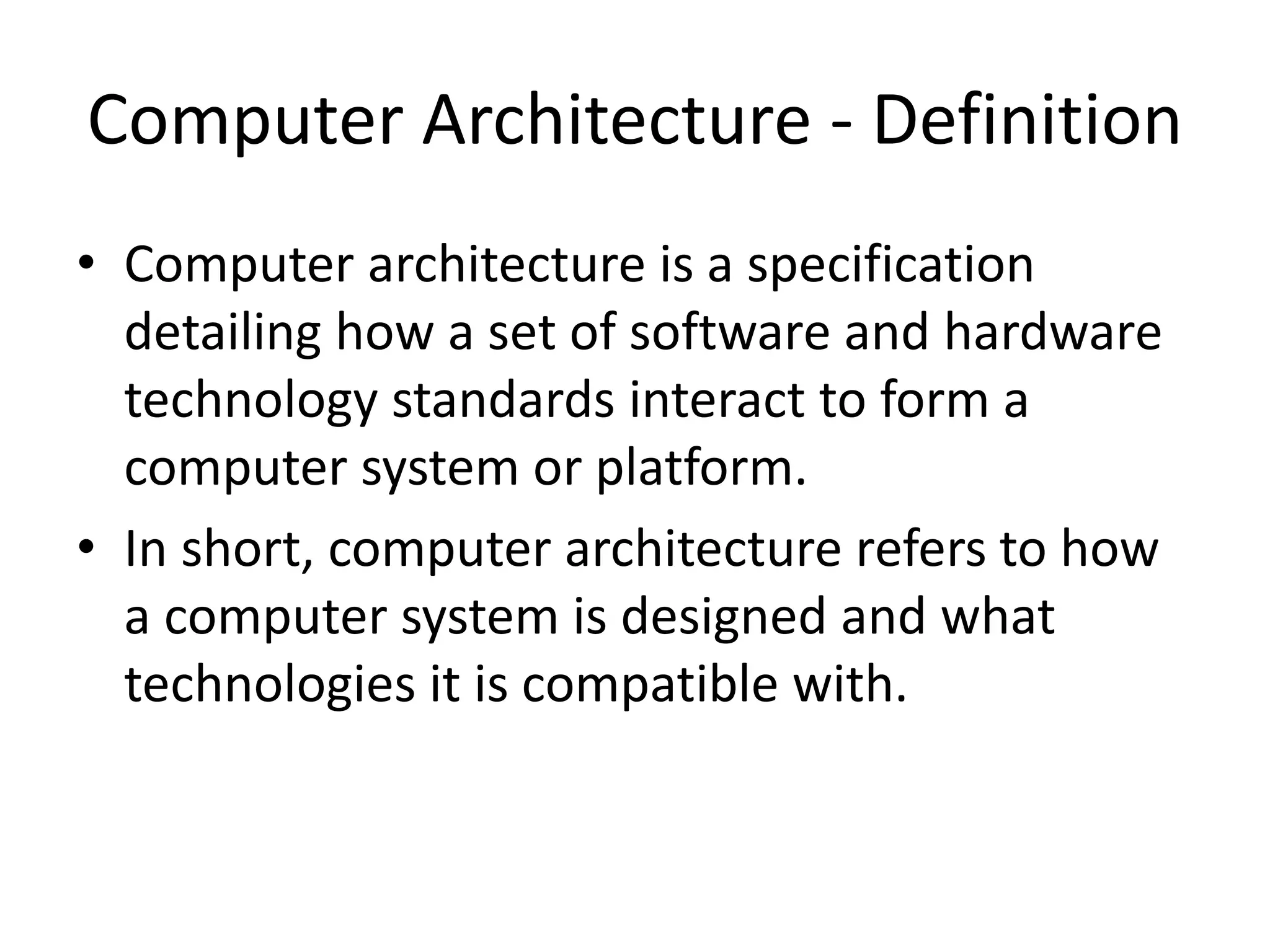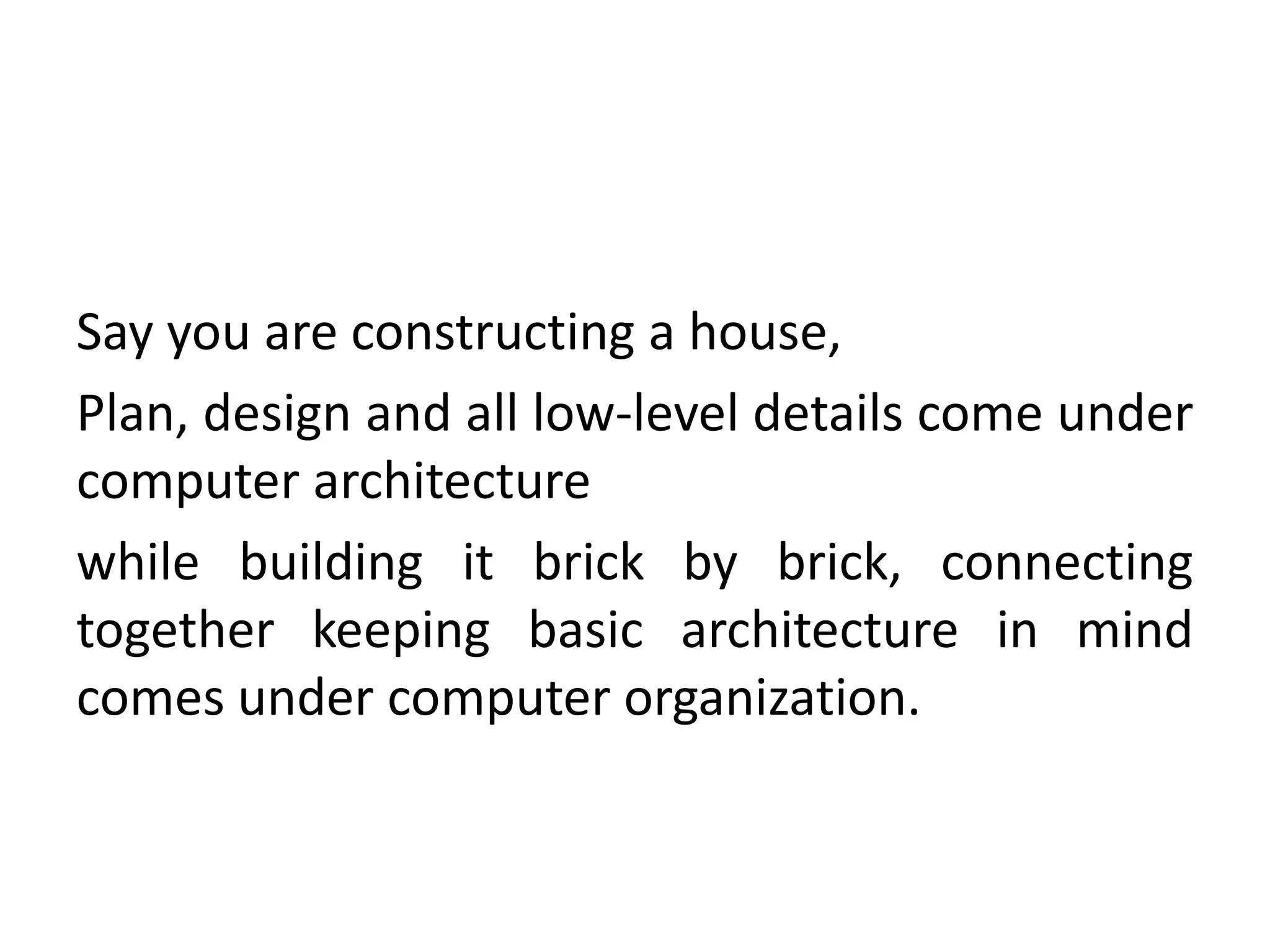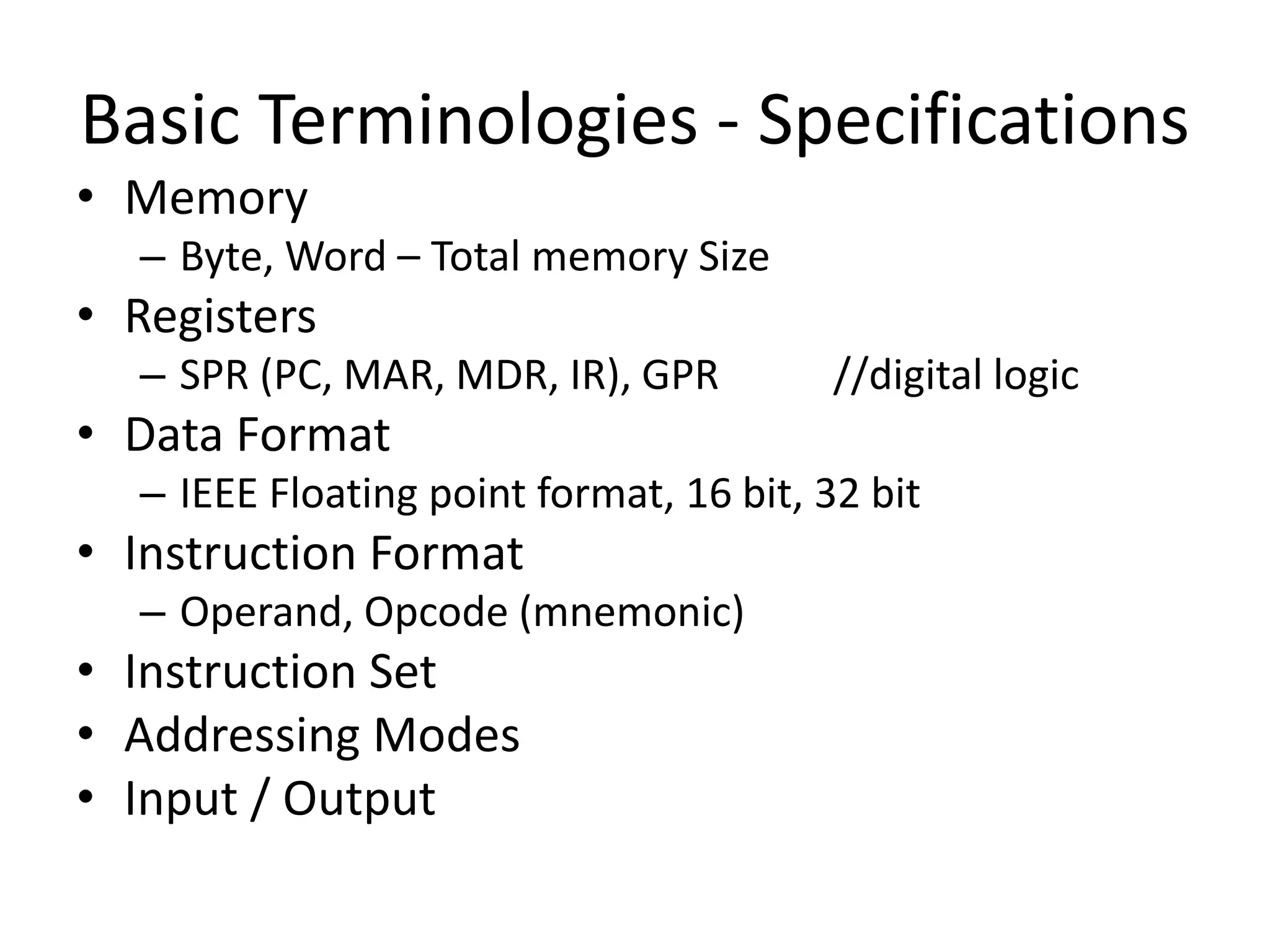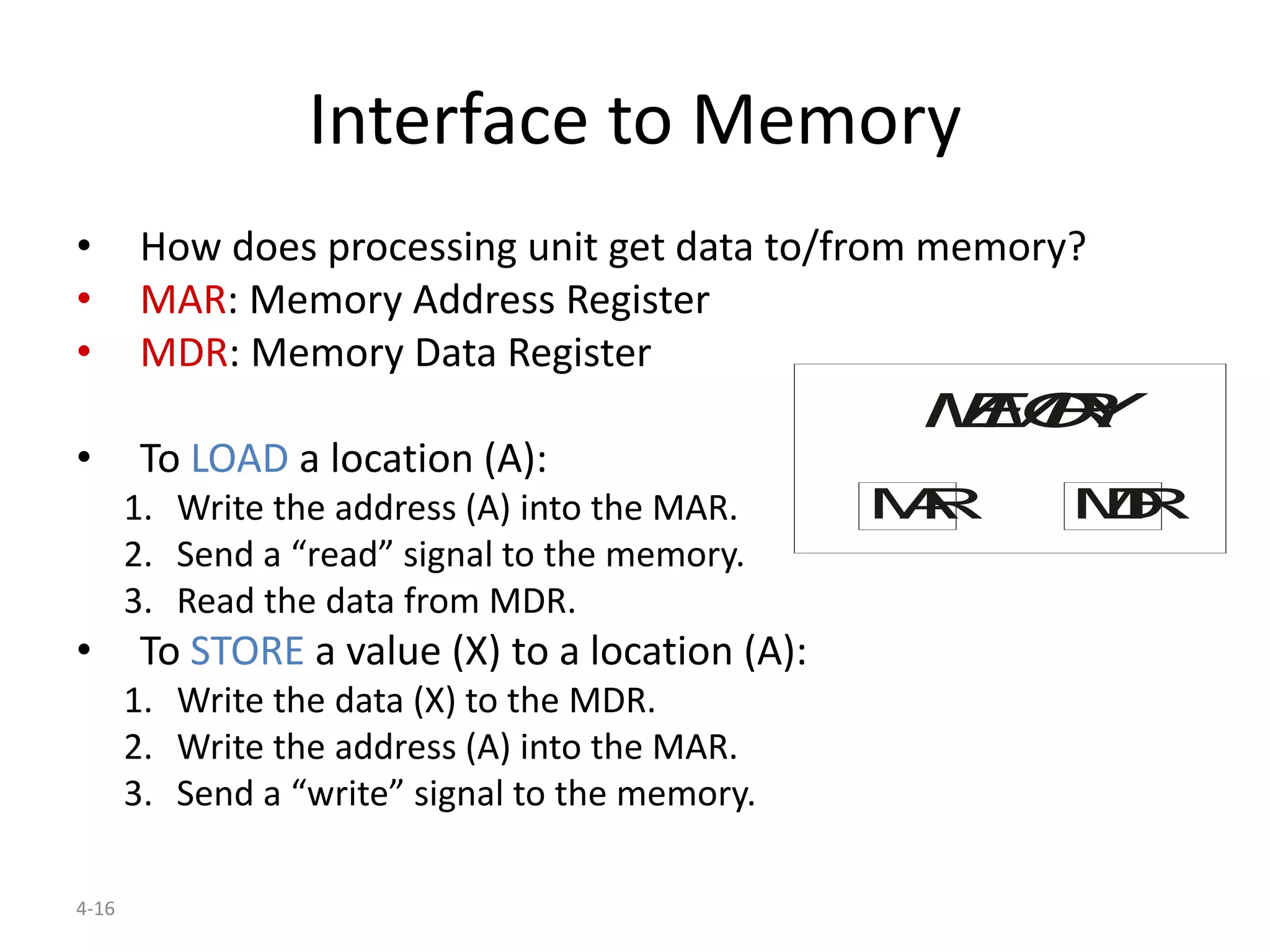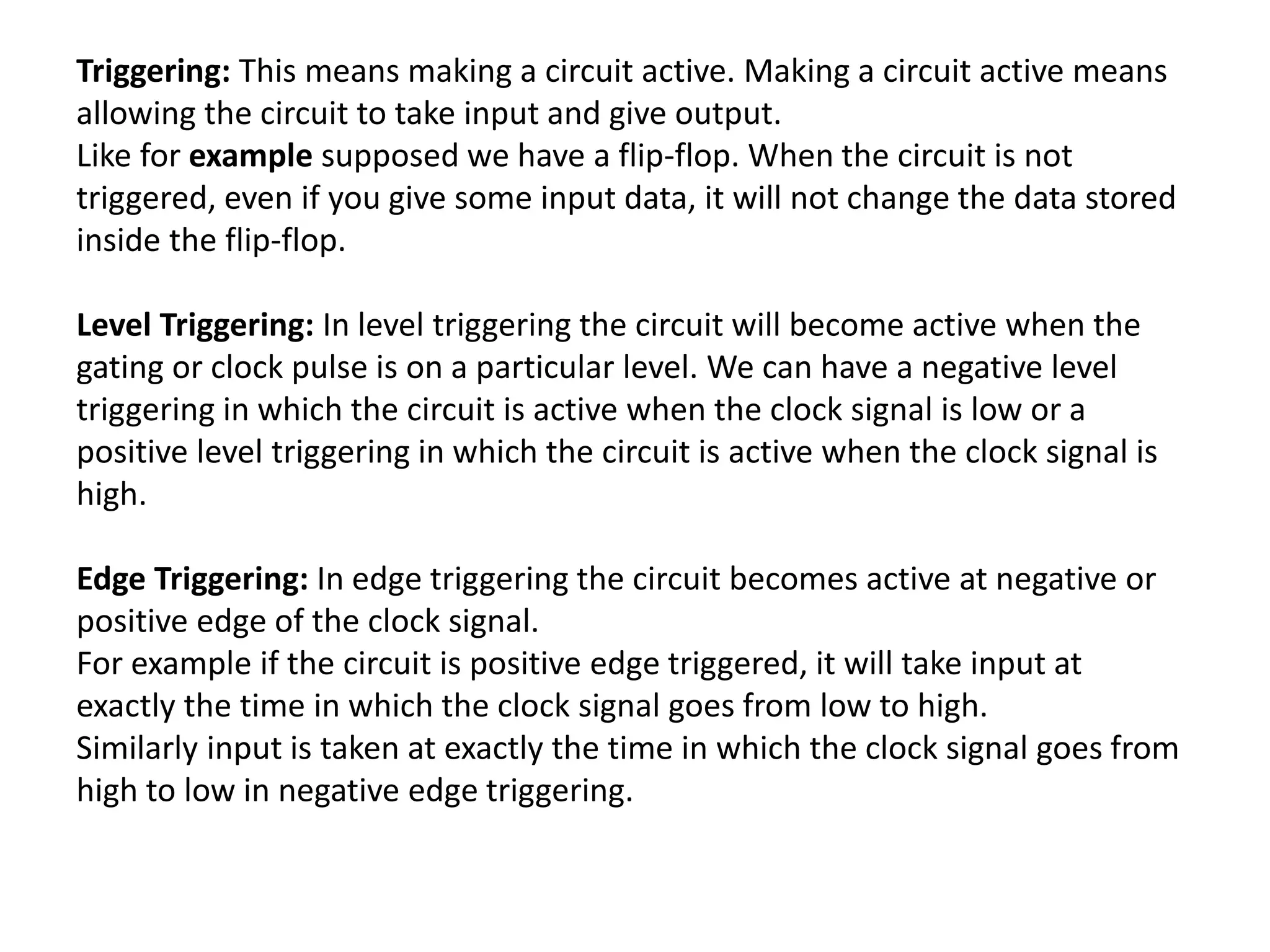This document provides information on the course EC8552 Computer Architecture and Organization. The objectives of the course are to understand MIPS instruction set architecture, arithmetic and logic units, data and control paths, memory and I/O organization, and parallel processing architectures. The outcomes are that students will be able to analyze computer system performance, illustrate arithmetic operations, describe pipelining and hazards, explain memory and I/O, and interpret parallel architectures. Assessments include tests, quizzes, assignments, and tutorials. The course will use an online Canvas platform.
